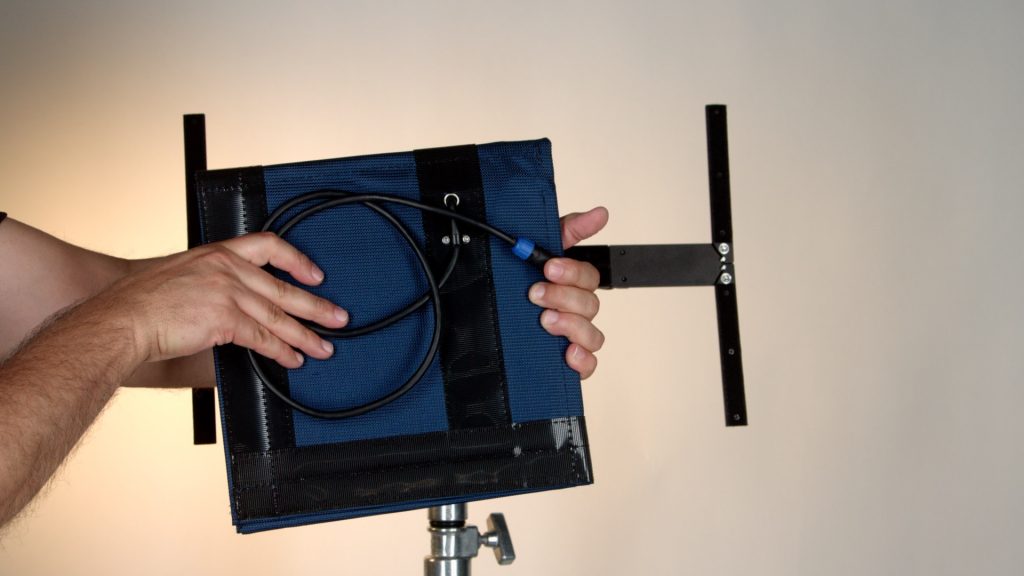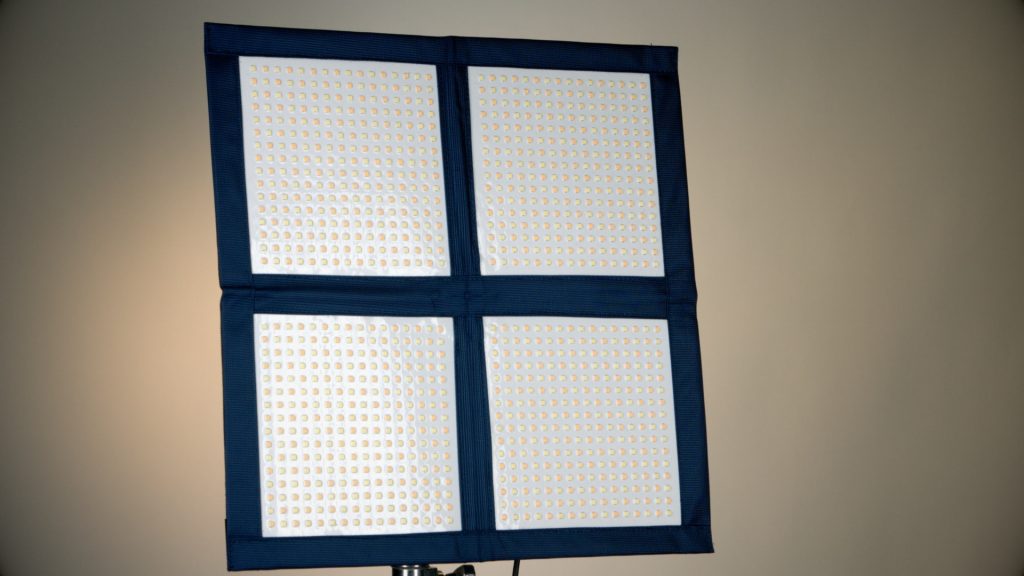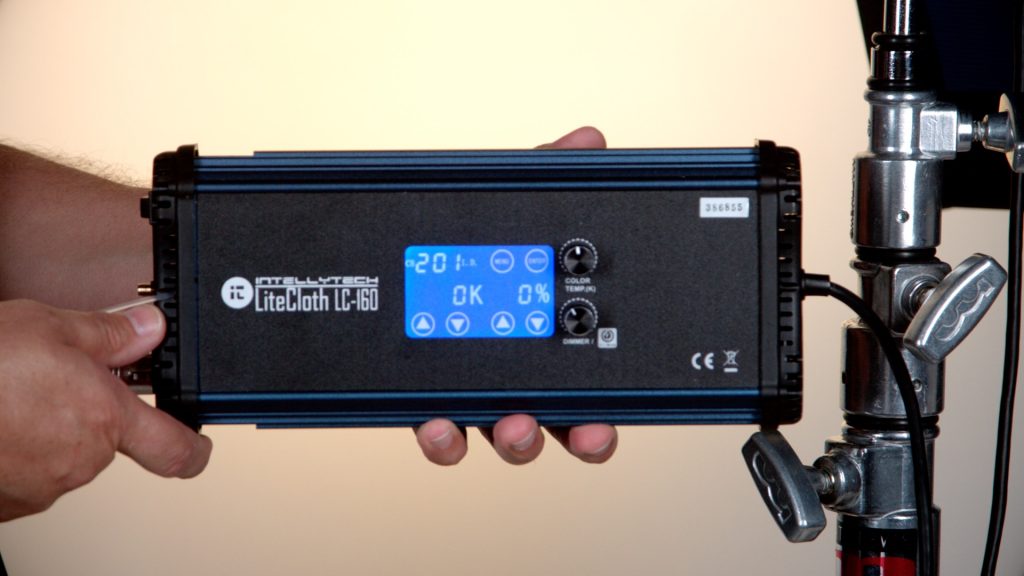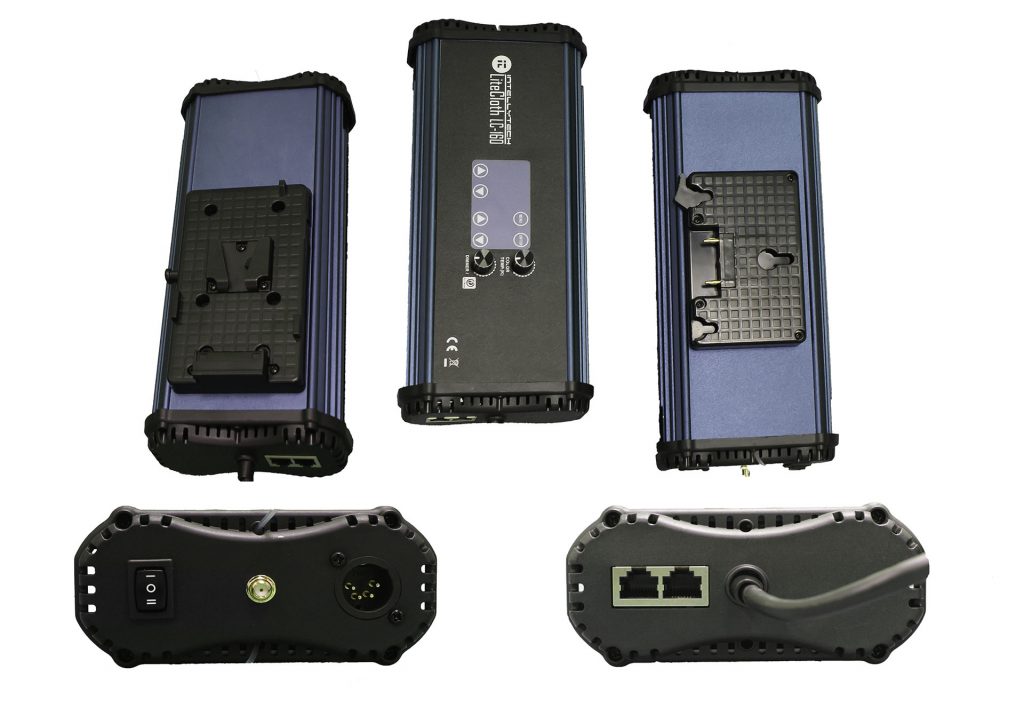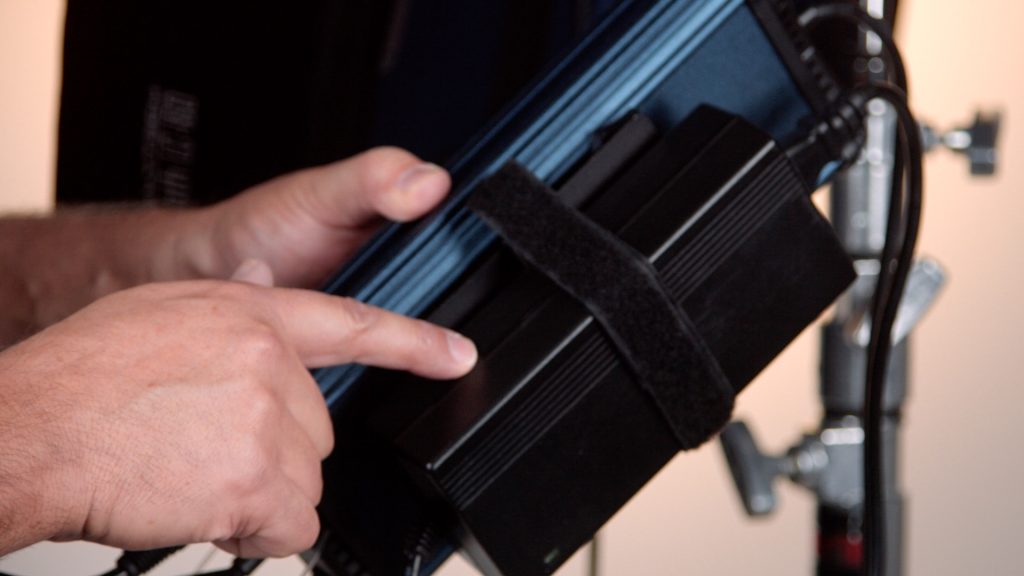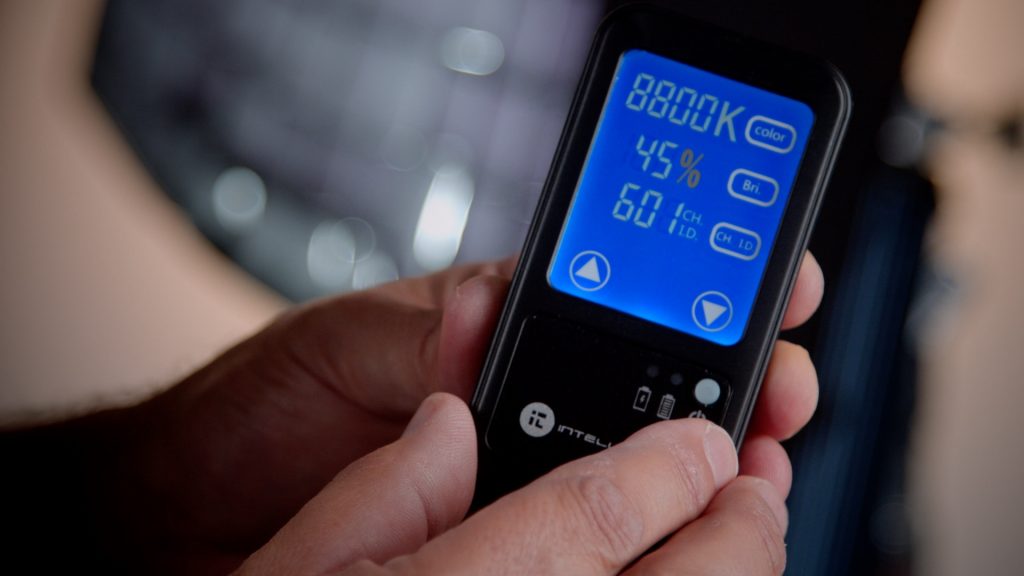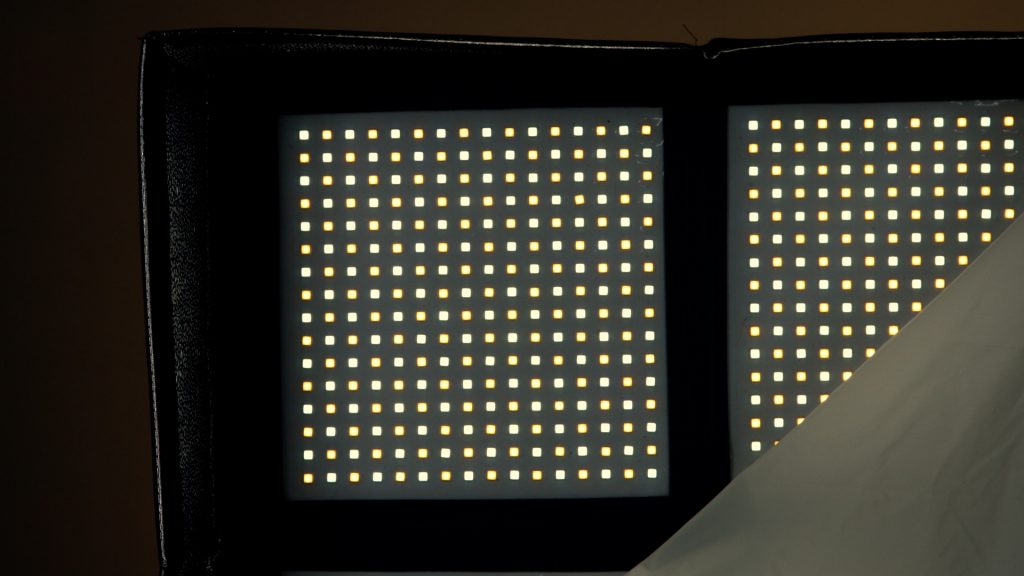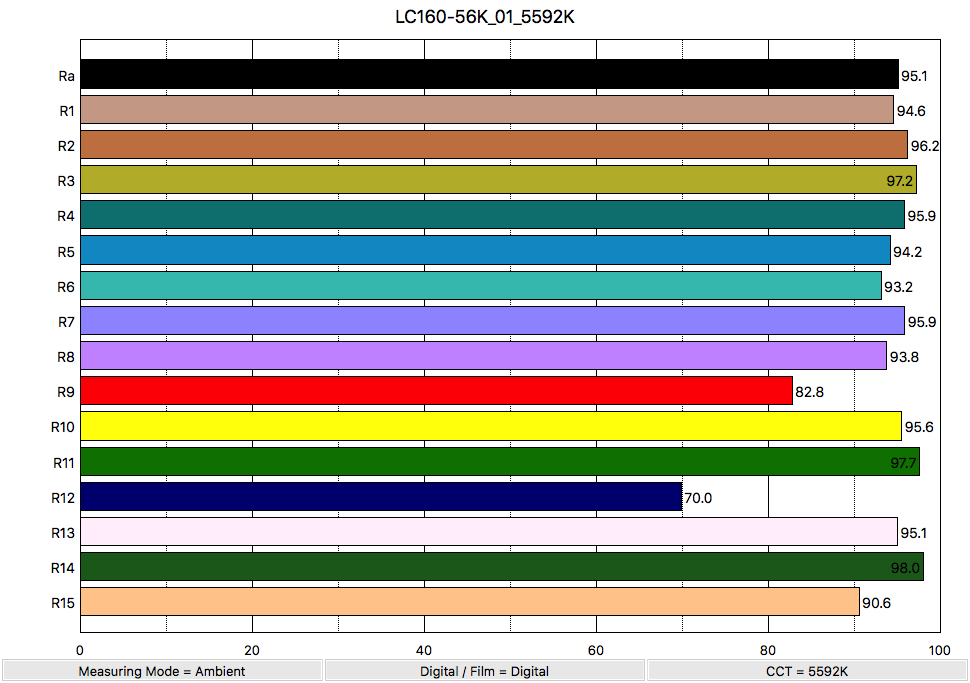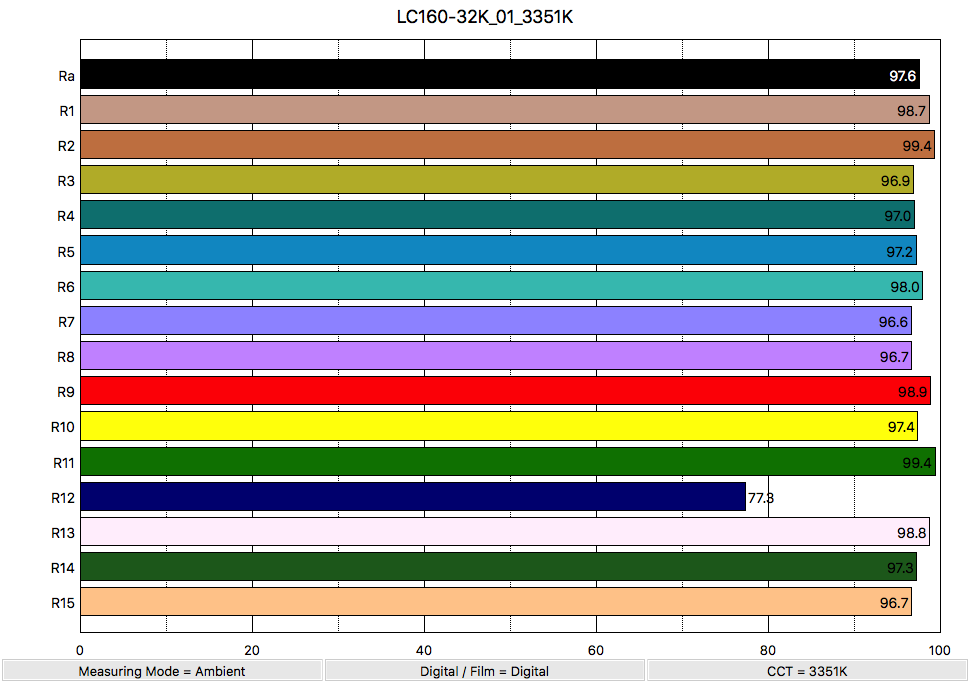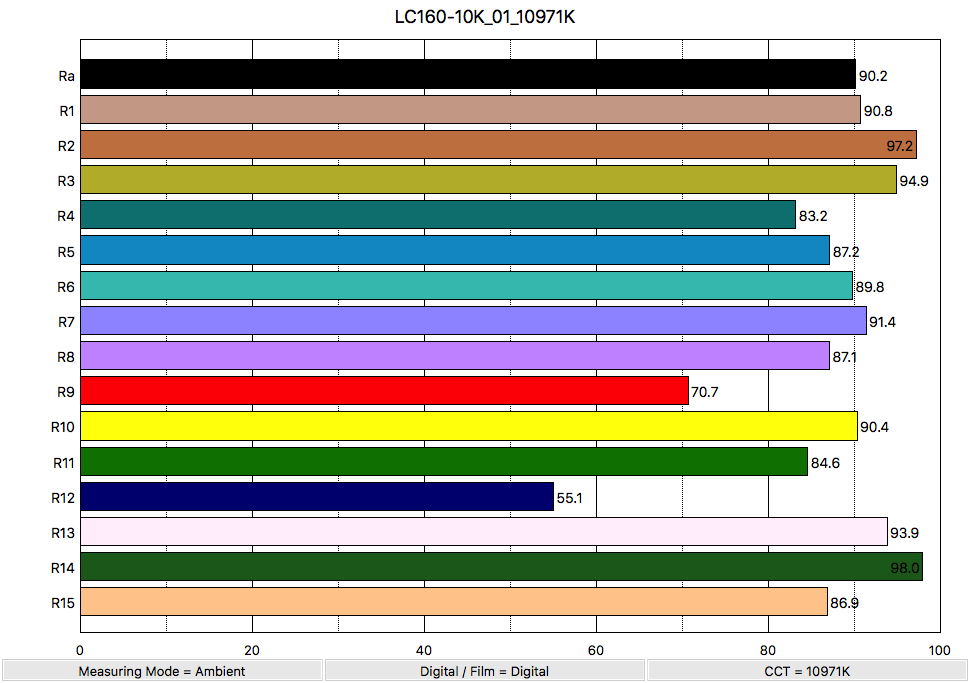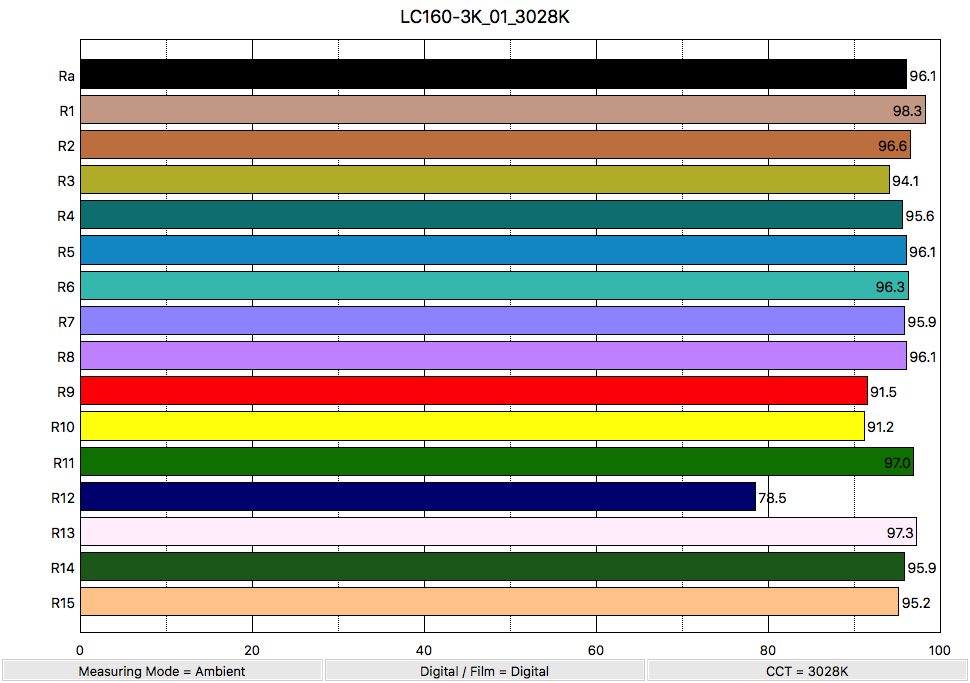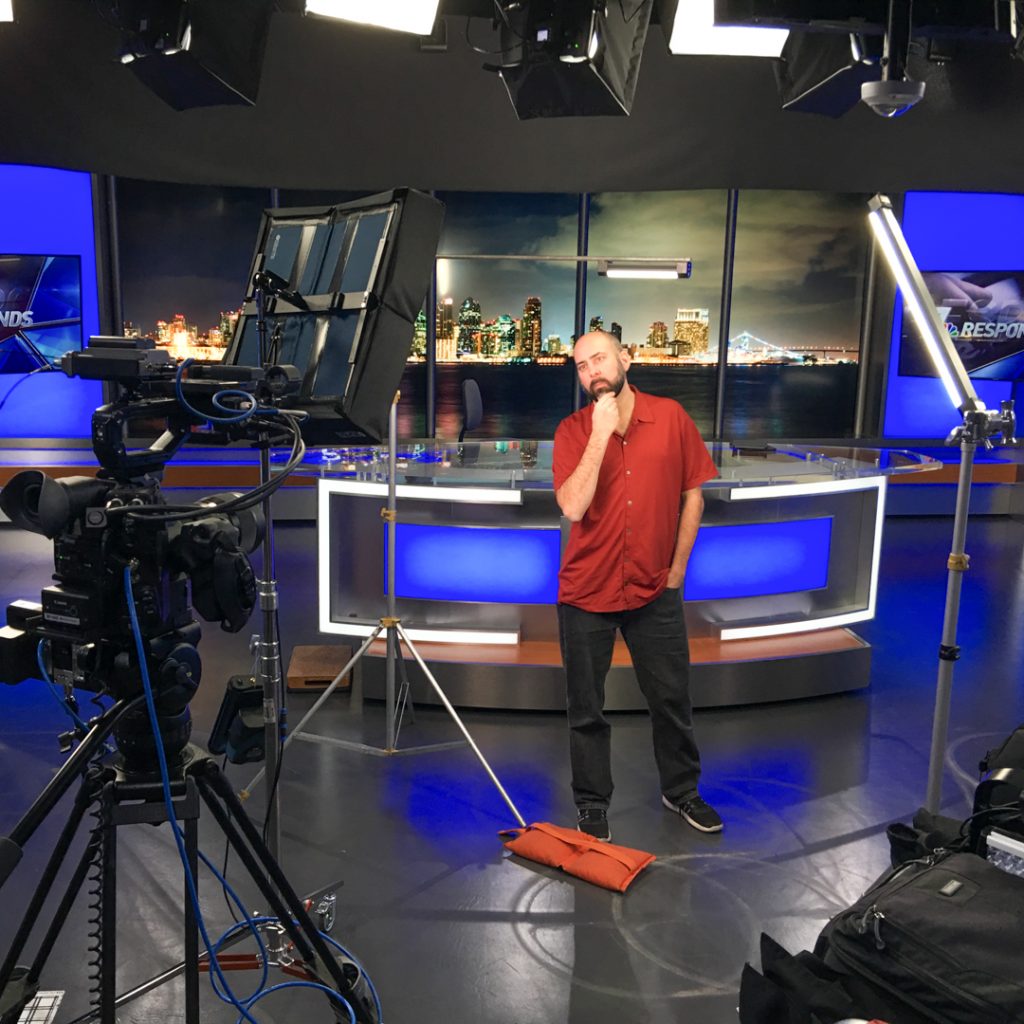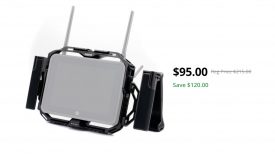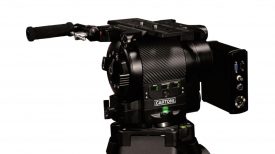Thin flexible LED fixtures like the Westcott Flex range of lights have grown a lot in the past couple of years from that small 10″ square. The non-glass diode LED’s make this possible due to their small, light and bright form factor. The flexible LED lights are great for when you need to get light into tight spaces. I’ve gaffe taped them to a wall before and it worked great.
With this advantage also comes issues. Mounting them in a traditional way can become a bit of a mess and the lights generally have a lot of parts that need to be put together. This leads to the versatility of the product, but when you just want to use it on a stand it’s not always fast or simple. In this review, I’ll be looking at the Intellytech LiteCloth LC-160. A 2×2′ foldable LED mat that folds down to the size of a 1×1′. Let’s jump in and get started!
The Intellytech LiteCloth LC-160 kit
- Intellytech LiteCloth LC-160 2×2′ Foldable LED Mat Kit (V-Mount or Gold Mount)
- Softbox
- Diffuser
- Grid
- Mounting Bracket
- Controller with Attached Battery Plate
- AC Adapter
- Power Cables
- Carrying Case (now a hard case)
- Limited 1-Year Warranty
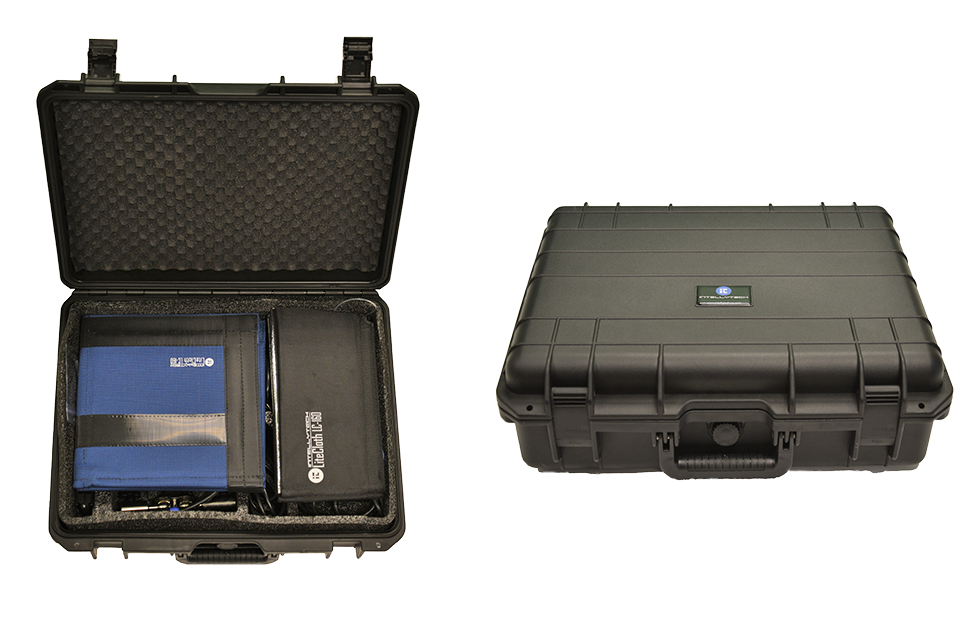 The Intellytech LiteCloth LC-160 is packaged to be very portable due to the foldable cloth base. The 2×2′ kit fits neatly in a soft case. Intellytech recently upgraded to a hard case. I haven’t seen it so can’t comment on it. Generally, I do prefer hard cases over soft for travel. When you have a lot of gear stacked up things can get crushed. Hopefully, the case isn’t made of brittle plastic as those tend to crack.
The Intellytech LiteCloth LC-160 is packaged to be very portable due to the foldable cloth base. The 2×2′ kit fits neatly in a soft case. Intellytech recently upgraded to a hard case. I haven’t seen it so can’t comment on it. Generally, I do prefer hard cases over soft for travel. When you have a lot of gear stacked up things can get crushed. Hopefully, the case isn’t made of brittle plastic as those tend to crack.
The LiteCloth LC-160 is basically four 12” squares arranged on a stiff cloth covered shell. When open it makes a 2×2′ panel. When folded it’s a nice and tight 12 x 12″ square.
It’s an interesting idea to make the light mat smaller for transport as well as being able to fold the light to shape it. The LiteCloth LC-160 isn’t a flexible mat that holds its shape. It can be shaped with the folds but each panel doesn’t have that bendability like the Westcott Flex.
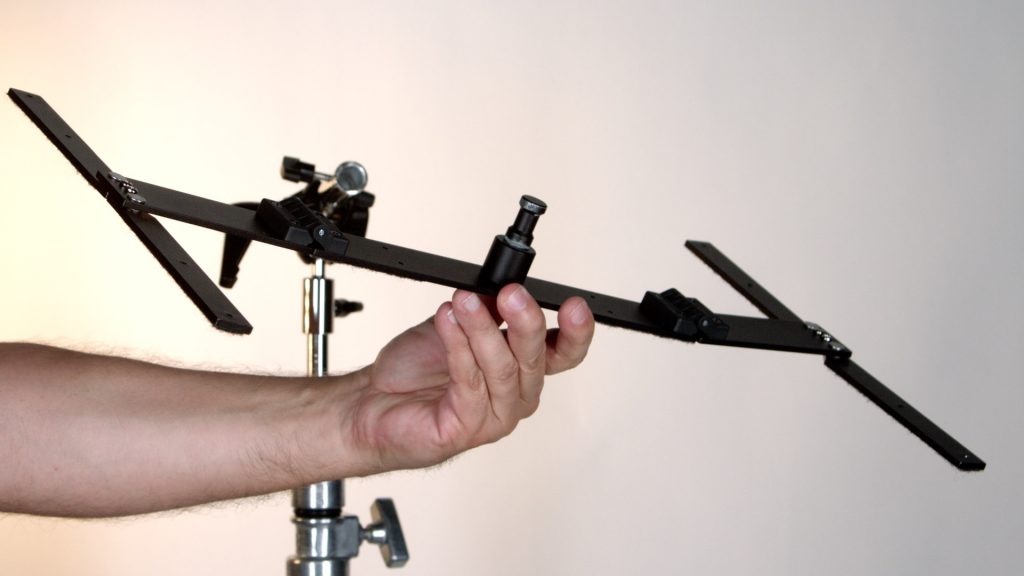 To mount the LiteCloth LC-160 on a light stand the, LiteCloth uses a foldable metal frame. The frame is solid and folds down to make storing and transporting easier. It attaches to the LiteCloth with Velcro fasteners.
To mount the LiteCloth LC-160 on a light stand the, LiteCloth uses a foldable metal frame. The frame is solid and folds down to make storing and transporting easier. It attaches to the LiteCloth with Velcro fasteners.
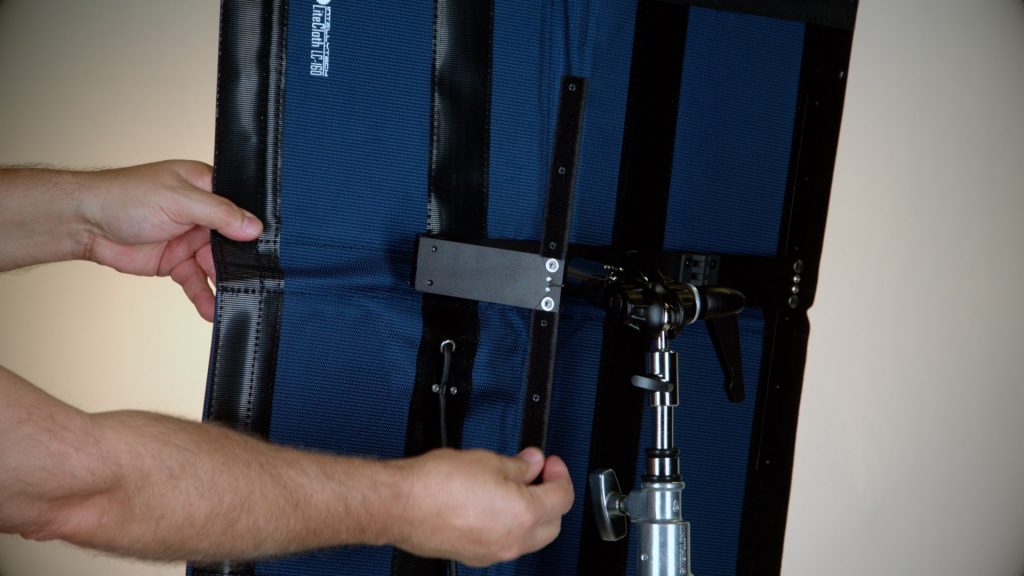 This is the strong type of Velcro. At first, I was skeptical if it would hold the large 2×2′ panel but it holds it firmly and I’ve kept it assembled for days in the studio without having to adjust it.
This is the strong type of Velcro. At first, I was skeptical if it would hold the large 2×2′ panel but it holds it firmly and I’ve kept it assembled for days in the studio without having to adjust it.
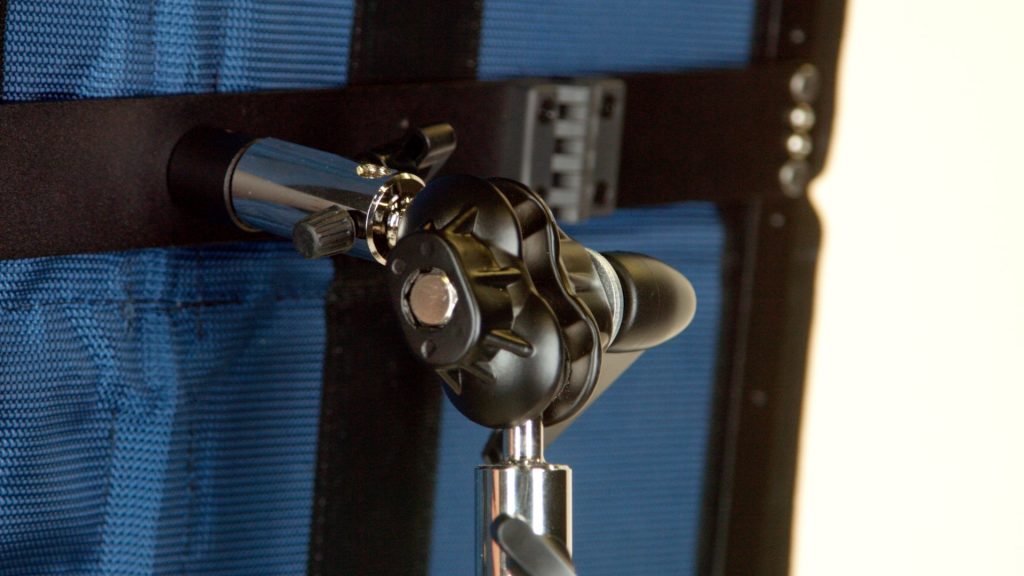
The LC-160 comes with a metal pivoting mount. While the provided light stand mount works I prefer to use a grip head. With that, a longer pin on the frame would be great. This design is pretty good, and the build considering it’s a cloth mat is nice. It’s important to have a solid frame for these type of panels. On the mounting bracket is a baby pin that you can attach directly to a grip head or the supplied metal receiver with tilting joint. The mounting system is well thought out and works. It’s not flimsy and the parts used all have a feeling that it can last on set. The setup does take some time compared to just popping a Litepanels Astra on a stand and plugging it in but versatility has a price and Intellytech did a nice job with this type of mounting system.
Coming in at 12″ long, the controller is the big brain of the LC-160. On the front is the controls for color and output.
The LiteCloth can be AC or battery powered via V-lock or Gold Mount batteries. When using a battery the watt-hours need to be above 160Wh and the battery needs to be a minimum of 15v (14.8v) to power the light. Use a lower Wh. battery and it will drain very fast.
The power switch found on the top of the unit has two options. One position is for battery power and the other is for AC. You can switch between them when a battery is installed and revert back to AC when available without taking off the battery. The controller doesn’t charge the battery when plugged into an AC outlet.
To keep the controller off the floor a V-Mount or Gold Mount adapter plate is included. This attaches with Velcro and locks into the battery dock. Very clever way to keep the ballast off the floor. A nylon strap is fastened to the top, so you can hang it on the stand. It works okay but I feel it needs to be more secure especially with a battery attached.
Also found on the top is a 4-pin XLR power input and antenna connectors for the optional LC-WR Wireless Remote Controller ($59). The wireless controller lets you change the color and output easily especially when the light is mounted high up off the ground. With the large display, it makes it easy to dial it in. The lights channel can be programmed on the controller so you could control individual or multiple channels in a group by setting them all on the same channel. Unfortunately, you can’t turn the fixture on or off with the wireless remote. The remote recharges via a USB input on the side.
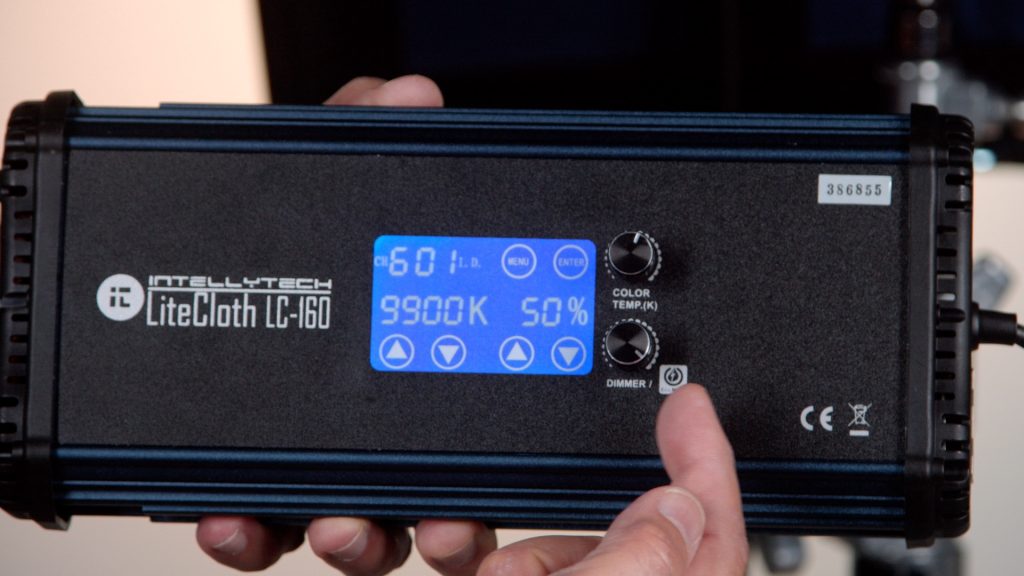 To change the output and color settings you have a dial for each as well as flat buttons. The design is a little strange to have both, I’m a dial guy myself. Both the dial and soft button changes the Kelvin in 50K increments and output is in one percent increments. Very good for fine-tuning output. The LiteCloth LC-160 can be also used with a DMX lighting system via the RJ45 connections.
To change the output and color settings you have a dial for each as well as flat buttons. The design is a little strange to have both, I’m a dial guy myself. Both the dial and soft button changes the Kelvin in 50K increments and output is in one percent increments. Very good for fine-tuning output. The LiteCloth LC-160 can be also used with a DMX lighting system via the RJ45 connections.
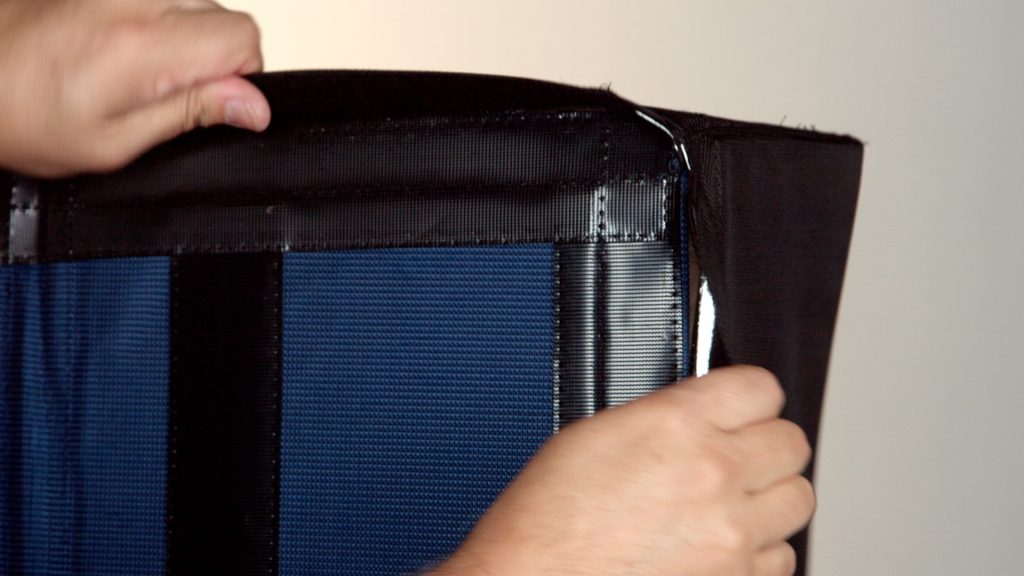 The kit also comes with a silver lined softbox. The diffusion and grid attach with velcro into the softbox.
The kit also comes with a silver lined softbox. The diffusion and grid attach with velcro into the softbox.
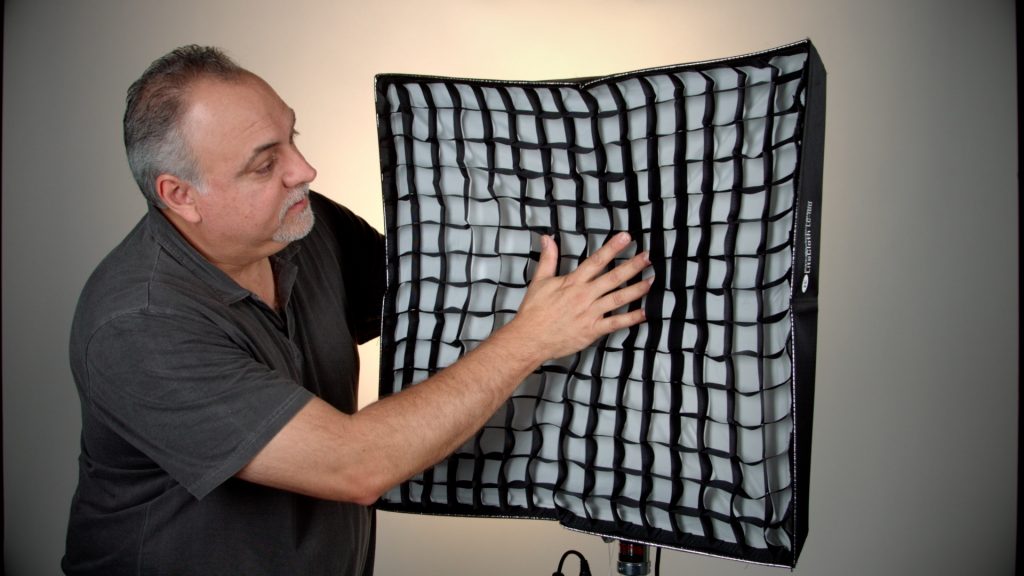
Again the velcro holds very well. It’s not a very deep softbox but with the diffuser attached it helps spread the LED arrays and produces some nice soft light. I rarely use LED panels without some type of diffusion in front whether it be directly on the face or shot through a frame with diffusion. Multiple tiny LED’s have multiple shadows and can have a strange unpleasing look which diffusion fixes. Also included is a honeycomb grid that does a good job of controlling the spill and focuses the light. It also velcros into the softbox frame.
Color and Output
The LiteCloth LC-160 has an impressive color range from 3000K to 10,000 Kelvin. Since the most popular color setting would be daylight at 5600K I’ll start there.
All tests performed are with a Sekonic C-700 SpectroMaster from 1 meter (3.3ft) to the front.
5600K Setting
With the LC-160 set to 5600K, I got a reading of 5592K.
The lights average CRI or Ra is the “mean color rendering index”. It is the average of R1 to R8. These colors represent the typical colors of the general environment. It comes in at a solid 95.1. The R9 is lower at 82.8 and surprisingly the R12 blue channel comes in at 70.
The extended CRI comprises all 15 colors added together and divided by 15 is 92.72 CRI.
The important skin tone range of R13 and R15 look good at over 90 CRI. The lower numbers indicate that particular colors vividness will be lower. In the real world, you probably won’t see a difference but it’s good info to know. However, if several values drop under 85 CRI the extended will also drop. I tend to focus on the Extended Ra for the overall quality of the light.
Output at 5600K
- 3640 LUX
- 338 Footcandles
3200K Setting
With the light set to 3200K Tungsten, the average CRI jumped to 97.6 with R12 also increasing to 77.3 CRI.
The extended CRI is 96.42.
Output at 3200K
- 3280 LUX
- 305 Footcandles
10,00K Setting
Output at 10,00K
- 3540 LUX
- 329 Footcandles
Here is where the color breaks down some. With the light set to 10,00K Tungsten, the average CRI (Ra) is 90.2.
The extended CRI is 86.74.
3000K Setting
Output at 3000K
- 3060 LUX
- 284 Footcandles
With the light set to 3000K Tungsten, the average CRI is 96.1.
The extended CRI is 94.17 CRI. Not bad at all.
CRI ratings are helpful to see if a light is at least in the quality range you want it to be. An average and extended CRI score of 90 and above is a very good indicator. Lower CRI scores mean those colors are less saturated. In practice, you might not see this, so it’s always good to use a light as well as score it to see if it performs well. Again the “Average CRI” is a great starting point.
Using the LiteCloth LC-160
Being a larger light source gives the LiteCloth a much broader beam angle. I think the light works really well in the softbox combined with a 4×4′ frame with diffusion. The included front diffusion panel is bright white giving a soft light that doesn’t add extra warmth. Having a source this big is very nice. I don’t use grids very often but again because of the size of the LC-160 it helps control spill and focuses soft light on the subject.
Here I used the LiteCloth LC-160 as a fill with an ASTRA punching through a frame on the other side as a key. The lights played well together. The advantage of having bicolor fixtures is when mixing them with different lights you can dial in the color to get them to match as close as possible. I used the Sekonic C300 to take readings from both lights with diffusion in place and dialed the LiteCloth LC-160 and ASTRA to match. You can also do this with your camera if it shows you the Kelvin readings after you take a manual white balance.
The LC-160 has enough punch to try a lot of different lighting techniques. This fixture is truly versatile.
Conclusion
I’ve used the Intellytech LC-160 LiteCloth on a lot of shoots and it performed very well for me. I shoot a lot of talent talking directly to the camera in our studio and around the building. Each location had a different color balance. With a simple check, I can dial it in for a good match. The lights also play well with others due to them being bi-color. I was able to get a good match with the Litepanel Astras and Quasar Science tubes. The build quilty is very good and setup is easy. Intellytech is an American company and performs all of their product servicing in Denver, Colorado.
When looking at flexible & foldable LED lights, other options in the flat mat style lights are:
- Westcott Flex Daylight LED Mat 2×2′ Cine Kit – $2,199.90
- Litegear S2 LiteMat 2 Kit 21×21″ – $1,649.99
- Brightcast Variable15-345
- FalconEyes RX-24
The Intellytech LC-160 is priced at $999 for the full kit and provides a good balance of price and quality. Heck, I want another one!

